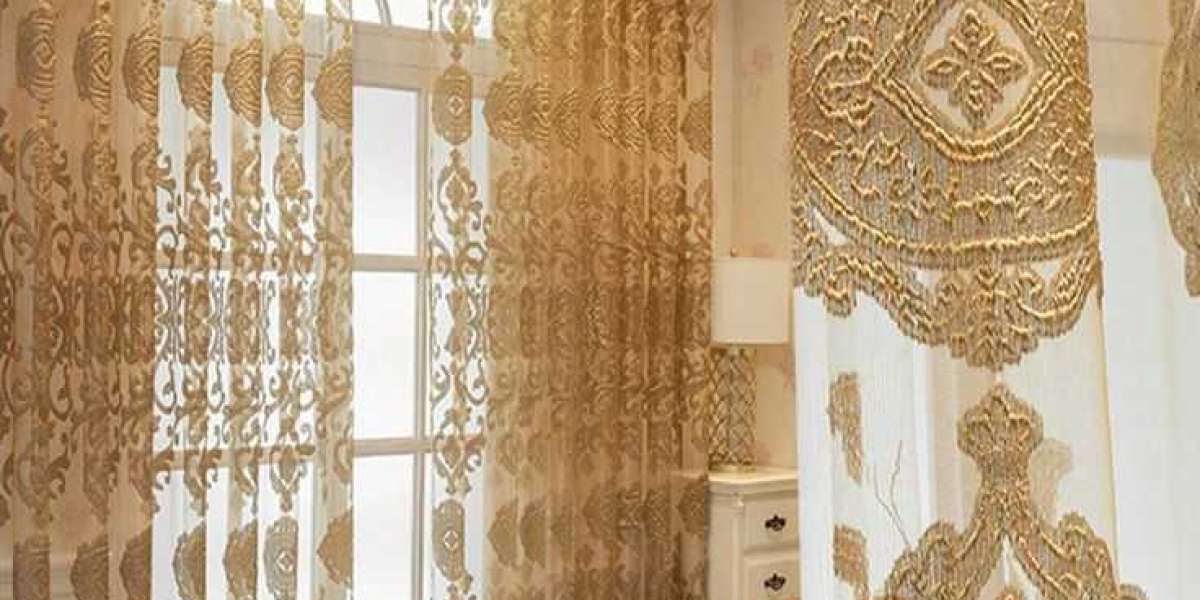The Rise of Smart Homes
Smart homes are no longer a futuristic concept; they are becoming a reality for many homeowners. The integration of smart devices, such as thermostats, lighting systems, security cameras, and voice assistants, has transformed the way we interact with our living spaces. These devices can be controlled remotely via smartphones, tablets, or voice commands, providing unprecedented levels of convenience and control.
Smart Curtains: A New Frontier
Smart curtains are a natural extension of the smart home trend. These curtains are equipped with motors and sensors that allow them to be opened, closed, and adjusted automatically or via remote control. The integration of smart curtains with other smart home devices creates a seamless and interconnected living environment.
Types of Smart Curtains
There are several types of smart curtains available in the market, each offering unique features and benefits:
Motorized Curtains: These curtains are equipped with motors that can be controlled via remote, smartphone app, or voice commands. They can be programmed to open and close at specific times of the day, providing convenience and energy savings.
Sensor-Activated Curtains: These curtains use sensors to detect light, temperature, or motion and adjust accordingly. For example, they can automatically open in the morning to let in natural light and close in the evening to provide privacy and security.
Voice-Controlled Curtains: These curtains can be controlled using voice commands through smart speakers like Amazon Alexa, Google Assistant, or Apple Siri. This hands-free control adds an extra layer of convenience.
App-Controlled Curtains: These curtains can be controlled via smartphone apps, allowing users to adjust the curtains from anywhere with an internet connection. This is particularly useful for homeowners who want to control their curtains while they are away from home.
Benefits of Integrating Smart Curtains with Smart Home Technology
The integration of smart curtains with other smart home devices offers a range of benefits, including:
1. Convenience and Automation
One of the primary benefits of smart curtains is the convenience they offer. With the ability to control curtains remotely or via voice commands, homeowners can easily adjust their window treatments without having to get up from their seats. This is particularly useful for individuals with mobility issues or those who simply want to save time and effort.
2. Energy Efficiency
Smart curtains can contribute to energy efficiency by automatically adjusting to the amount of sunlight entering the room. For example, they can close during the hottest parts of the day to block out heat and reduce the need for air conditioning. Similarly, they can open in the morning to let in natural light, reducing the need for artificial lighting.
3. Enhanced Security
Smart curtains can enhance home security by creating the illusion of occupancy. For example, they can be programmed to open and close at specific times, even when the homeowner is away, making it appear as though someone is home. This can deter potential intruders and provide peace of mind.
4. Improved Privacy
Smart curtains can be programmed to close automatically when privacy is needed, such as during movie nights or when working from home. This eliminates the need to manually adjust the curtains, providing a more seamless and convenient experience.
5. Customization and Personalization
Smart curtains can be customized to suit individual preferences and schedules. For example, they can be programmed to open and close at specific times of the day, or to adjust based on the amount of sunlight entering the room. This level of customization allows homeowners to create a living environment that is tailored to their needs and preferences.
Integration with Other Smart Home Devices
The true power of smart curtains lies in their ability to integrate with other smart home devices, creating a cohesive and interconnected living environment. Here are some examples of how smart curtains can be integrated with other smart home devices:
1. Smart Thermostats
Smart curtains can be integrated with smart thermostats to optimize energy efficiency. For example, when the smart thermostat detects that the room is too warm, it can automatically close the curtains to block out heat and reduce the need for air conditioning. Similarly, when the room is too cold, the curtains can be opened to let in sunlight and provide natural warmth.
2. Smart Lighting
Smart curtains can be integrated with smart lighting systems to create a seamless transition between natural and artificial light. For example, when the curtains open in the morning to let in natural light, the smart lighting system can automatically dim the lights to create a comfortable and energy-efficient environment. Similarly, when the curtains close in the evening, the smart lighting system can automatically adjust the brightness to provide adequate illumination.
3. Smart Security Systems
Smart curtains can be integrated with smart security systems to enhance home security. For example, when the smart security system detects that the homeowner is away, it can automatically close the curtains to create the illusion of occupancy. Similarly, when the homeowner returns, the curtains can be programmed to open, welcoming them home.
4. Voice Assistants
Smart curtains can be integrated with voice assistants like Amazon Alexa, Google Assistant, or Apple Siri to provide hands-free control. For example, homeowners can simply say "Alexa, open the curtains" or "Hey Google, close the curtains" to adjust their window treatments without having to lift a finger.
Future Prospects of Smart Curtains
The integration of smart curtains with smart home technology is still in its early stages, but the potential for growth and innovation is immense. Here are some future prospects for smart curtains:
1. Advanced Sensors and AI
Future smart curtains may be equipped with advanced sensors and artificial intelligence (AI) to provide even more precise control and automation. For example, AI algorithms could analyze weather patterns and adjust the curtains accordingly to optimize energy efficiency and comfort.
2. Integration with Health Monitoring Systems
Smart curtains could be integrated with health monitoring systems to create a more personalized and health-conscious living environment. For example, curtains could automatically open to let in sunlight when the system detects that the homeowner needs a dose of vitamin D, or close to block out harmful UV rays when the sun is at its peak.
3. Sustainable Materials and Energy Harvesting
Future smart curtains may be made from sustainable materials and equipped with energy-harvesting technologies, such as solar panels, to further enhance their environmental credentials. For example, solar-powered smart curtains could generate their own electricity to power the motors and sensors, reducing their reliance on external power sources.
4. Enhanced Customization and Personalization
Future smart curtains may offer even more advanced customization and personalization options, allowing homeowners to create a truly unique and tailored living environment. For example, curtains could be programmed to adjust based on the homeowner's daily routine, mood, or even the type of music playing in the background.
Conclusion
The integration of smart home technology with curtains is a growing trend that offers a range of benefits, including convenience, energy efficiency, enhanced security, and improved privacy. As smart home technology continues to evolve, the potential for innovation and advancement in smart curtains is immense. From advanced sensors and AI to integration with health monitoring systems and sustainable materials, the future of smart curtains is bright and full of possibilities. Homeowners who embrace this trend can look forward to a more convenient, comfortable, and energy-efficient living environment.








